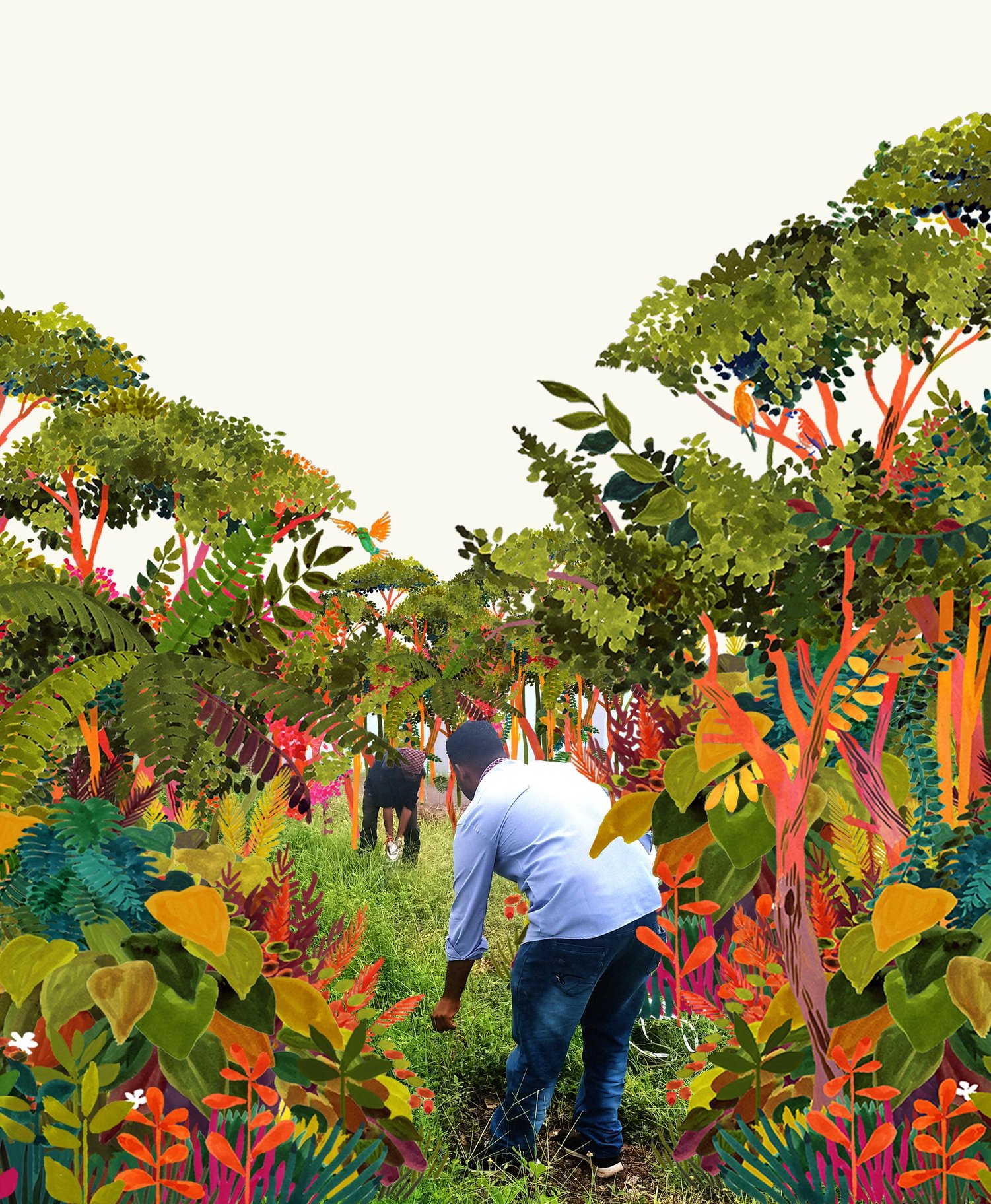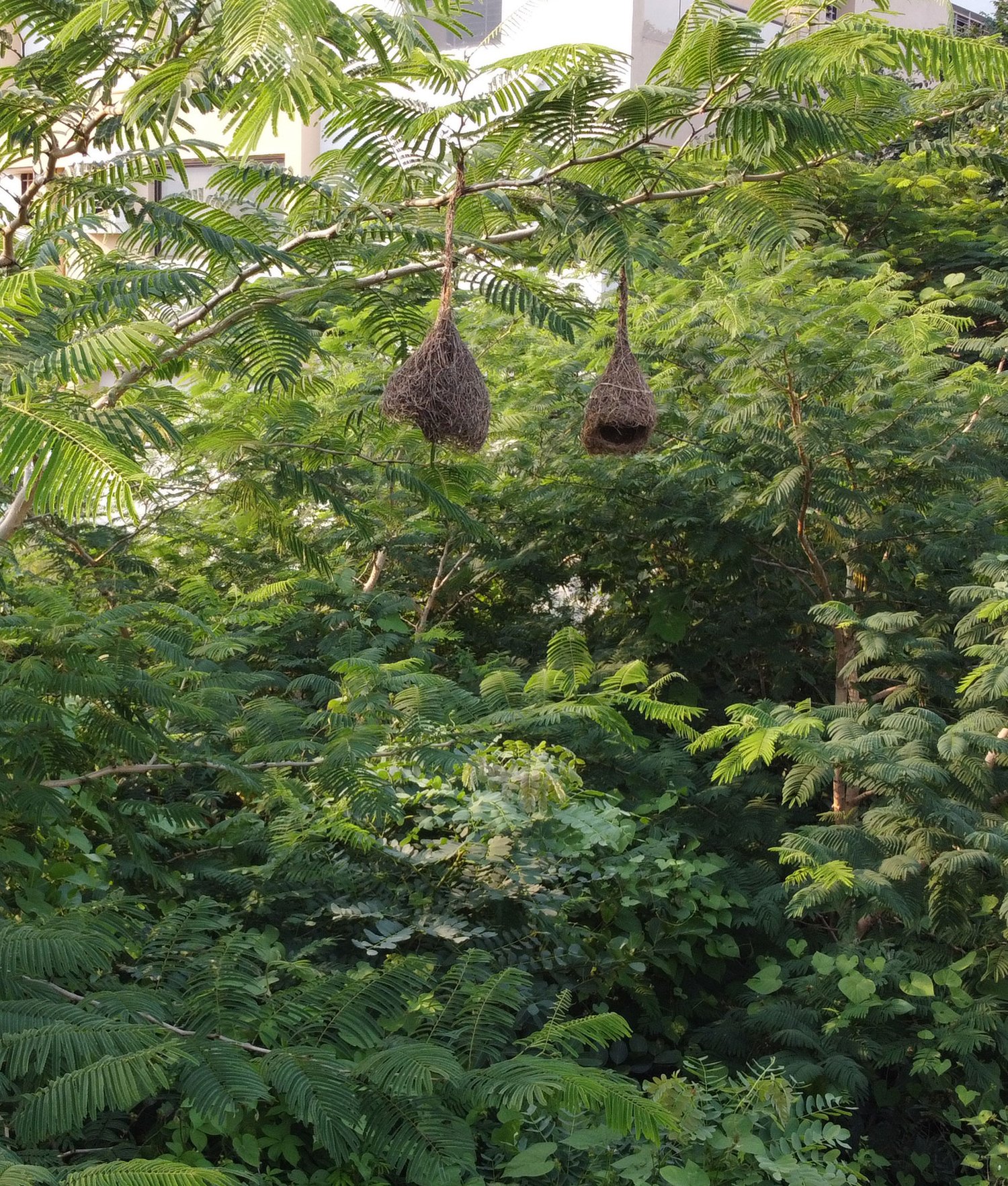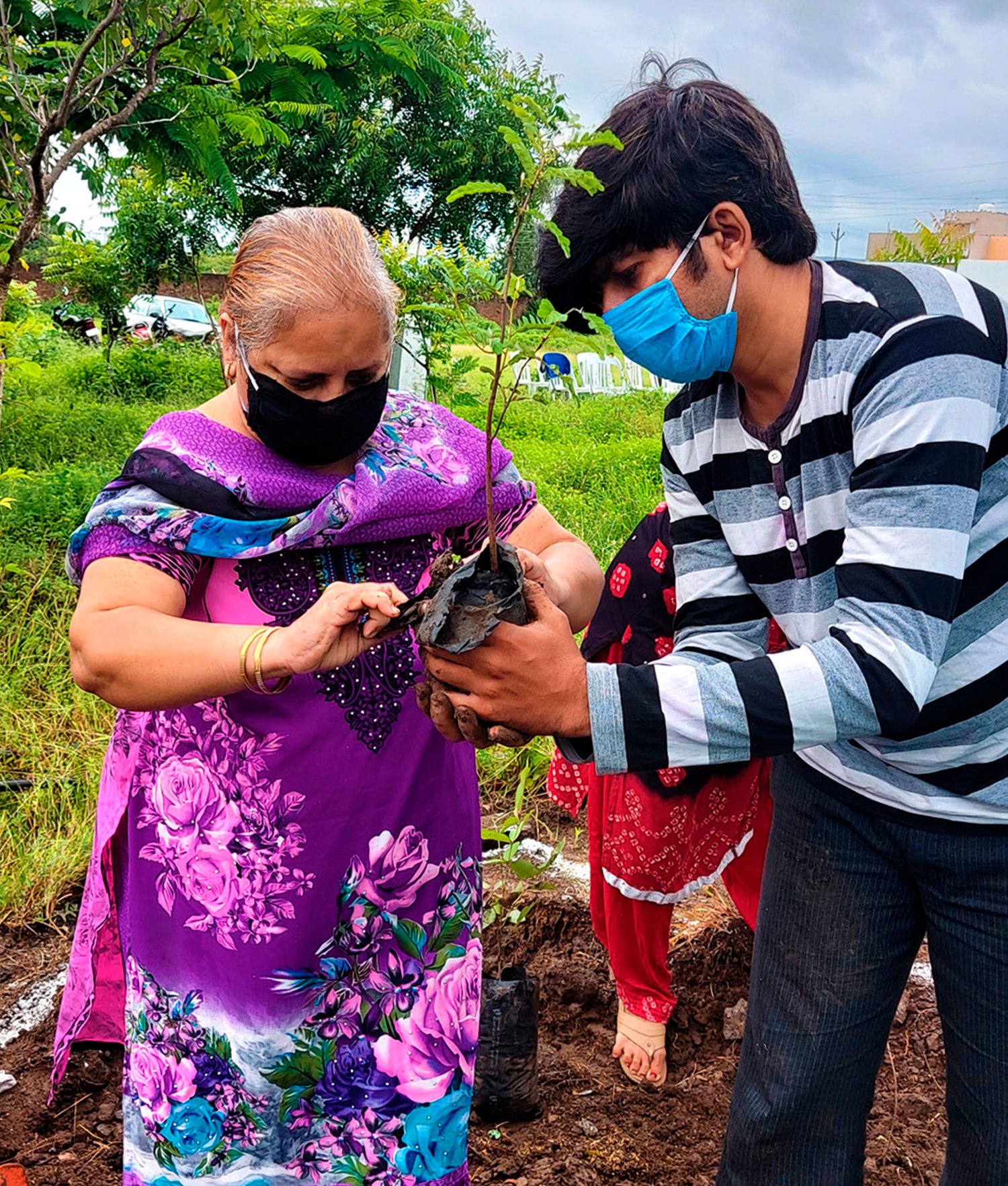
Aurangabad, India
Yuhan Housing Forest
Rebuilding a community's relation with nature.
We are creating a Miyawaki Forest for a housing society in the city.
With this forest we aim to encourage biodiversity but also build an area of recreation for the residents in and around the housing society.
Rewilding Aurangabad is a must as it faces one of the harshest summers in the country.
Forest Maker EcoSattva

900
Trees
280
square meters
30
native species


“The people of Aurangabad are getting more and more aware of the harsh realities of climate change and initiatives like these give us hope for the future of the city.”
— EcoSattva
Forest Report: 2 Years
DATE: 05.08.2022
Survival Rate: 80%
Tallest Tree: 527cm
Similar to other forests in Aurangabad this year, Yuhan Housing Forest certainly struggled during the severe summer drought. Yet, the forest has recovered exceptionally well - as indicated by the excellent survival rate. This is yet more evidence of the resilience of forests created using the Miyawaki method.
The forest is now very dense and cannot be entered, as is normal for this age of forest in this climate. The Khair (Senegalia catechu) remains the tallest tree in the forest at 671cm, nearly 40% increase in height in 1-year.
The forest has become very dense and now cannot be entered, as it should be. This pocket forest continues to be a joy for local residents who comment on the cooler temperatures around the forest that they can enjoy in the summer months.
The khair trees are home to an abundance of Weaver birds (Ploceidae) . The density of the forest has made it a challenge to identify fauna but simultaneously means that species can thrive without human disturbance.



Forest Report: 1 Year
DATE: 05.08.2021
The 487cm tree is the Khair (Senegalia catechu). Overall, tree height is ranging from 274cm to 487cm. The girth of the tallest Khair is 23cm and on average, tree girth is ranging from 10 to 18cm.
It has been noted that trees growing in proximity to the pre-existing, large tree on the site are slightly smaller than those not obscured by this larger tree. That being said, they are still growing well. Reports from the local residents, who live next to the forest, say that they are experiencing much cooler temperatures and more
noticeable breezes.



Biodiversity Notes:
Three species of butterflies, including the Tiger Milkweed (Danaus sp.), Lemon Pansy (Junonia lemonias) and Common Yellow (Eurema hecabe) have been observed, along with black giant ants. A Greater Coucal Bird (Centropus sinensis) has also been identified.


Forest Report: Planting
DATE: 05.08.202



The Benefits
Planting a forest at Yuhan Housing Society will:
- Be a recreational space for the community
- Mitigate heat islands
- Preserve native species & restore biodiversity
- Help reverse the region from desertification
Discover more SUGi Projects


De Ark
A forest learning center in Sint-Niklaas


Langalibalele Forest
Cultivating a green oasis for community wellness and education.


Papenhof Forest
Nature-based therapy at the heart of a city


